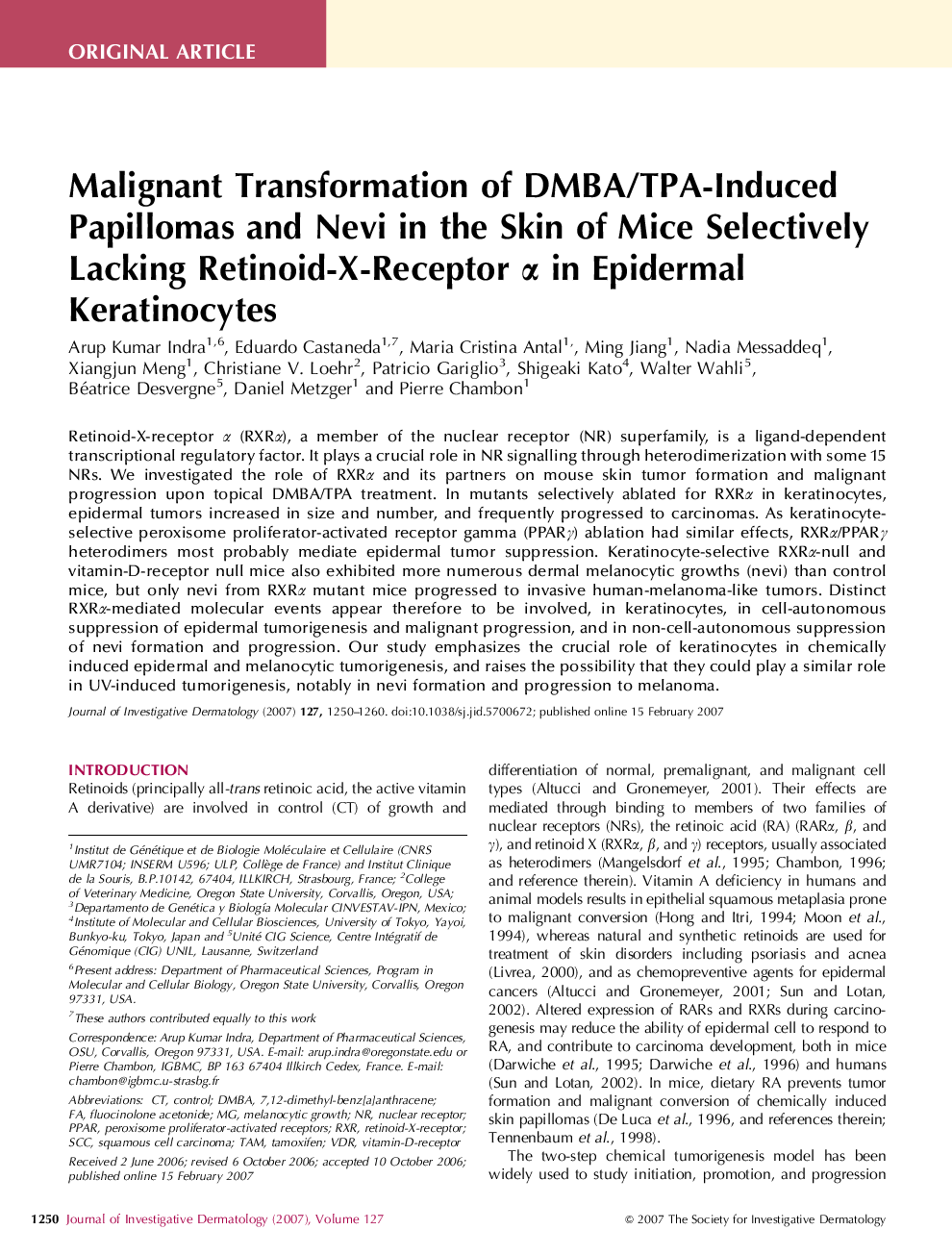| Article ID | Journal | Published Year | Pages | File Type |
|---|---|---|---|---|
| 3216767 | Journal of Investigative Dermatology | 2007 | 11 Pages |
Retinoid-X-receptor α (RXRα), a member of the nuclear receptor (NR) superfamily, is a ligand-dependent transcriptional regulatory factor. It plays a crucial role in NR signalling through heterodimerization with some 15 NRs. We investigated the role of RXRα and its partners on mouse skin tumor formation and malignant progression upon topical DMBA/TPA treatment. In mutants selectively ablated for RXRα in keratinocytes, epidermal tumors increased in size and number, and frequently progressed to carcinomas. As keratinocyte-selective peroxisome proliferator-activated receptor gamma (PPARγ) ablation had similar effects, RXRα/PPARγ heterodimers most probably mediate epidermal tumor suppression. Keratinocyte-selective RXRα-null and vitamin-D-receptor null mice also exhibited more numerous dermal melanocytic growths (nevi) than control mice, but only nevi from RXRα mutant mice progressed to invasive human-melanoma-like tumors. Distinct RXRα-mediated molecular events appear therefore to be involved, in keratinocytes, in cell-autonomous suppression of epidermal tumorigenesis and malignant progression, and in non-cell-autonomous suppression of nevi formation and progression. Our study emphasizes the crucial role of keratinocytes in chemically induced epidermal and melanocytic tumorigenesis, and raises the possibility that they could play a similar role in UV-induced tumorigenesis, notably in nevi formation and progression to melanoma.
